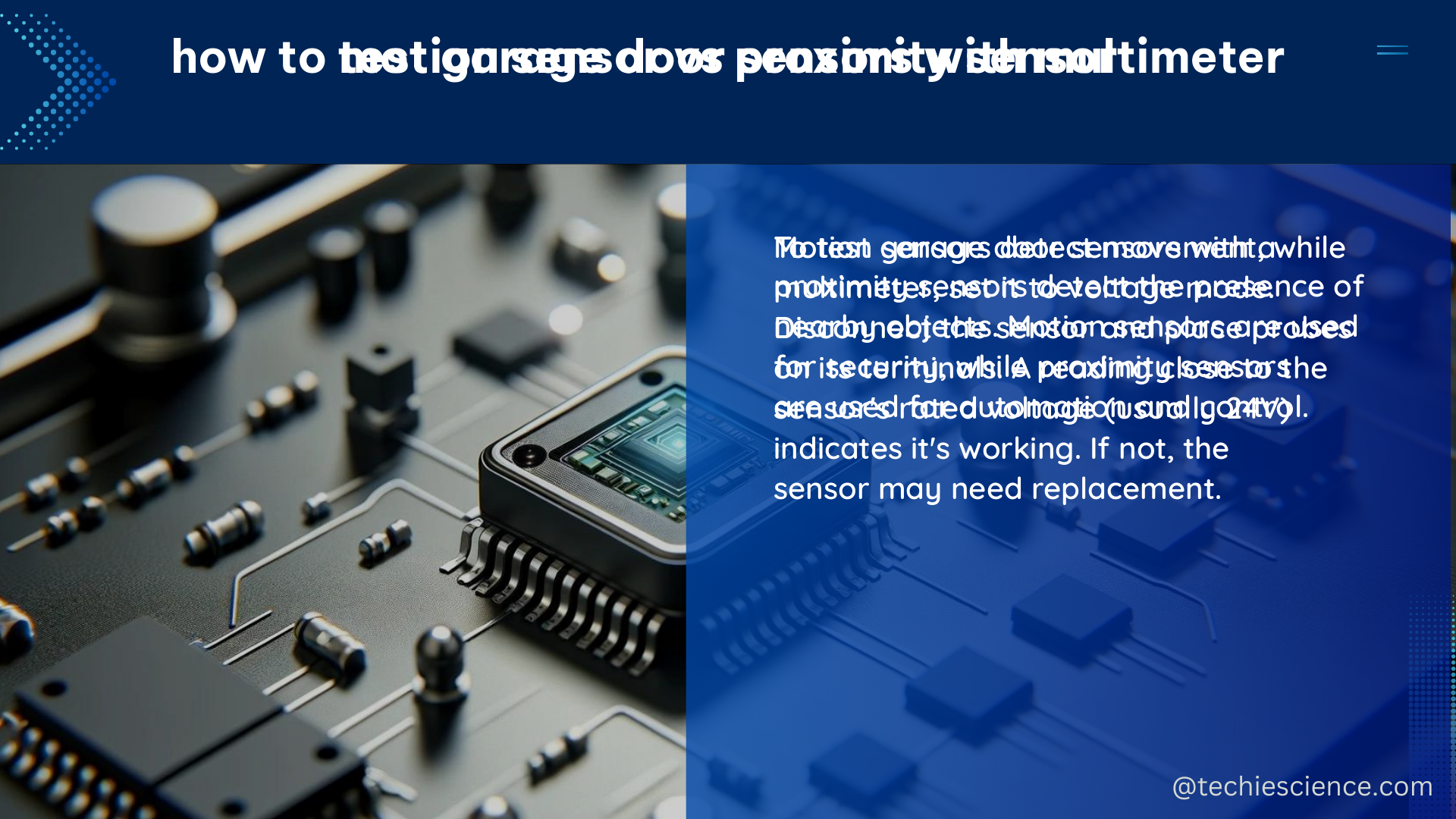Motion sensors and proximity sensors are two types of sensors that are commonly used in various applications to detect the presence or absence of an object or a person. Both sensors have their unique specifications and characteristics that make them suitable for different use cases.
Understanding Motion Sensors
Motion sensors, also known as passive infrared (PIR) sensors, detect motion by sensing changes in infrared radiation in a specific area. They are commonly used in security systems, home automation, and industrial automation. Motion sensors have a detection range of up to 15 feet and can detect motion in a wide area. They are also energy-efficient and have a long lifespan.
Technical Specifications of Motion Sensors
- Detection Angle: Up to 110 degrees
- Response Time: Less than 0.5 seconds
- Voltage Range: 5-12V
- Power Consumption: Less than 100mW
Motion sensors may not be able to detect small movements or movements that are too fast. They are also susceptible to false alarms caused by pets, animals, or other sources of infrared radiation.
Exploring Proximity Sensors

Proximity sensors, on the other hand, detect the presence or absence of an object by using electromagnetic fields or ultrasonic waves. They are commonly used in manufacturing, automotive, and medical applications. Proximity sensors have a detection range of up to a few inches and can detect the presence or absence of objects with high precision. They are also resistant to interference and can operate in harsh environments.
Technical Specifications of Proximity Sensors
- Detection Range: Up to 6 inches
- Response Time: Less than 10 milliseconds
- Voltage Range: 5-24V
- Power Consumption: Less than 500mW
Proximity sensors may not be able to detect objects that are too far away or too small. They are also more expensive than motion sensors and require more complex installation and maintenance.
Integrating Sensors into DIY Projects
Both motion sensors and proximity sensors can be easily integrated into various DIY projects using Arduino or Raspberry Pi boards.
Motion Sensor Applications
Motion sensors can be used to create home automation systems that turn on lights or appliances when motion is detected. They can also be used in security systems to trigger alarms or notifications when motion is detected.
Proximity Sensor Applications
Proximity sensors can be used to create obstacle detection systems for robots or drones. They can also be used in manufacturing applications to detect the presence or absence of objects on an assembly line.
Choosing the Right Sensor
When choosing between motion sensors and proximity sensors, it is essential to consider the detection range, precision, environmental factors, and cost.
| Specification | Motion Sensor | Proximity Sensor |
|---|---|---|
| Detection Range | Up to 15 feet | Up to 6 inches |
| Precision | Lower | Higher |
| Environmental Factors | Susceptible to false alarms | Resistant to interference |
| Cost | Lower | Higher |
Conclusion
Motion sensors and proximity sensors are two types of sensors that have their unique specifications and characteristics. Motion sensors are commonly used in security systems and home automation, while proximity sensors are commonly used in manufacturing and medical applications. Both sensors can be easily integrated into various DIY projects using Arduino or Raspberry Pi boards. When choosing between motion sensors and proximity sensors, it is essential to consider the detection range, precision, environmental factors, and cost.
References
- Sensing and Sensor Fundamentals – ResearchGate
- Sensors for daily life: A review – ScienceDirect
- Sensing and Sensor Fundamentals – SpringerLink
- Human Factors Considerations for Quantifiable Human States in … NUREG-1959 “Intrusion Detection Systems and Subsystems

The lambdageeks.com Core SME Team is a group of experienced subject matter experts from diverse scientific and technical fields including Physics, Chemistry, Technology,Electronics & Electrical Engineering, Automotive, Mechanical Engineering. Our team collaborates to create high-quality, well-researched articles on a wide range of science and technology topics for the lambdageeks.com website.
All Our Senior SME are having more than 7 Years of experience in the respective fields . They are either Working Industry Professionals or assocaited With different Universities. Refer Our Authors Page to get to know About our Core SMEs.